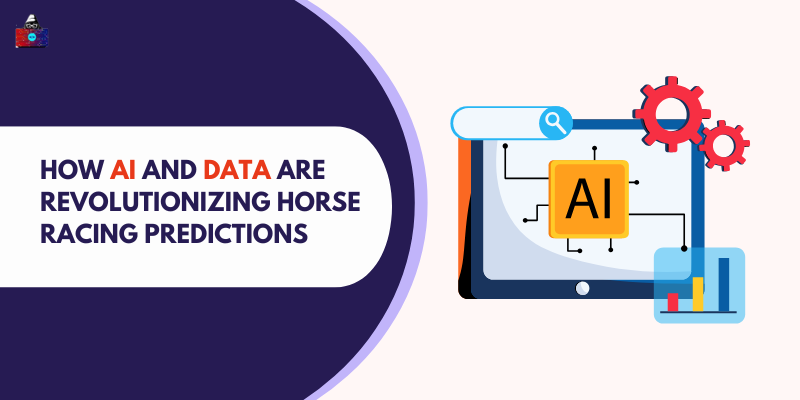In 2025, Artificial Intelligence (AI) is deeply integrated into our daily lives. AI refers to machines simulating human intelligence, enabling them to think, reason, learn, and make decisions independently. What once used to exist only in a realm of science or a theory is now embedded into our daily lives, from voice assistants to recommendation systems. Understanding the history of artificial intelligence will be helping us to appreciate even more how we have come so far over the decades and where it might be headed in the future. AI's evolution is not only about the story of technology, but it is also a story about curiosity, innovations, and much more.
Origins of Artificial Intelligence
Long before any kind of machine, like a computer, existed, philosophers and mathematicians used to think about and also be fascinated by the concept of mechanical reasoning. This is the thing that gives the idea or could be replicated from the model by the machines.
Early Philosophical Ideas
As early as the 4th century BCE, Aristotle introduced the world to the logical reasoning principle that might later influence computer science and AI as well. During the 17th century, another two phenomenal researchers speculated about creating machines that were not only capable of rational thoughts but also would be giving the reasoning of the symbols and the logic.
These early machines laid the foundation of the whole eventual concept of artificial intelligence, and even though it was just a technological concept at that time, at that time it was far more about making it into reality.
Alan Turing and the Turing Test
In 1950, British mathematician Alan Turing published a groundbreaking paper known as Computing Machinery and Intelligence. In this paper, he proposed a fundamental question without knowing which is which. If humans cannot distinguish between the two, then the discussion shifts to the intersection of philosophy and computer science, becoming one of the earliest frameworks for evaluating machine intelligence.
The Birth of AI (1950s–1960s)
The true birth of AI as a science definitely occurred in the mid-20th century, when computers were becoming powerful enough to process any kind of data and also help you to execute logical operations.
The Dartmouth Conference (1956)
In 1956, a historic event took place that is known as the Dartmouth Summer Research Project on Artificial Intelligence. This was organized by John McCarthy, Marvin Minsky, Claude Shannon, and Nathaniel Rochester.
This conference coined the term artificial intelligence. The group's goal was ambitious: to develop machines that could easily perform human-like reasoning, although they basically underestimated the complexity of any kind of task. This event really marked the beginning of AI research as a formal discipline.
Early AI Programs and Experiments
Several landmark programs were created during this period:
- Logic Theorist (1956): Developed by Newell and Simon, this program could solve mathematical proofs using symbolic logic.
- General Problem Solver (1957): Attempted to mimic human problem-solving processes.
- ELIZA (1964): It was created by Joseph Weizenbaum. It simulated conversation through pattern matching, acting like an early chatbot.
The AI Winter (1970s–1980s)
After the initial excitement, progress slowed dramatically, leading to what became known as the “AI Winter.”
Overpromises and Funding Cuts
Many researchers have promised that there is rapid progress, but when it comes to AI systems struggling with the real world, complexity exists.
Early AI systems were only capable of solving well-defined problems. However, real-world challenges were full of puzzles. As a result, governments and major institutions like DARPA in the U.S., which had heavily invested in AI, became disappointed by the slow progress. Funding was cut back, and AI research entered a temporary decline.
Reasons for Stagnation
- Limited computing power: The hardware of the time was not able to support complex models.
- Data scarcity: One of the reasons for stagnation was AI systems requiring vast datasets, which didn’t exist yet.
- Overhyped expectations: They thought that the working of AI would be flawless, but it was not; researchers underestimated the challenges of replicating human reasoning.
Despite the slowdown and all the challenges related to the AI, a small group of scientists continued working on machine learning and neural network theories so that the AI could come back into the industry.
Rise of Machine Learning (1990s–2000s)
This was the time when AI began to recover during the 1980s and early 1990s, driven by improved hardware, larger datasets, and new algorithms.
Shift from Rule-Based to Data-Driven Systems
This was the major point when earlier AI relied on hand-coded rules to make any kind of decision. However, those systems were not adaptive and were rigid. The new approach they introduced was known as machine learning, which allowed computers to learn certain kinds of patterns from the dataset instead of relying solely on any kind of pre-programmed logic.
Key innovations included:
- Decision trees and neural networks
- Support Vector Machines (SVM)
- Bayesian networks
Key Breakthroughs
- IBM's Deep Blue in 1997 not only defeated the world chess champion, Garry Kasparov, but also showed that the computer could really outperform any human being in any kind of complex reasoning task.
- Speech recognition and computer vision technology were other factors in making it more mature and paving the way for any kind of digital assistance and image classification tools.
Machine learning not only became the cornerstone for any kind of modern AI but also started to shift the focus from symbolic reasoning to statistical pattern recognition as well.
Modern AI Revolution (2010–Present)
The 2010s marked a dramatic resurgence in AI, driven by big data, deep learning, and powerful GPUs.
Deep Learning and Neural Networks
Deep learning is a subfield of machine learning that uses multi-layered neural networks to process any kind of data in many different ways, inspired by the human brain. This is the technique that truly helped transport how the machines could handle images, speech, natural language, and any kind of absurd data.
Breakthroughs included:
- ImageNet (2012): Drastically improved the image recognition and recognition network accuracy as well.
- Google’s AlphaGo (2016): Defeated a world champion in the complex board game Go.
-
GPT models (2018–Present): Advanced language models like OpenAI’s ChatGPT revolutionized how machines understand and generate text.
AI in Everyday Life
Today, AI powers:
- You could see voice assistants (Siri, Alexa, and Google Assistant). They have recently become a major part of our daily lives.
- Recommendation engines (Netflix, Spotify, YouTube)
- Autonomous vehicles that can be driven in autopilot mode.
- Healthcare diagnostics
- Customer support chatbots
Challenges and Ethical Considerations
As AI continues to evolve, so do its challenges.
1. Bias and Fairness:
Challenges such as biased and unfair AI systems that have been particularly trained based on biased data can produce unfair results that could lead to affecting the hiring process, lending, and many kinds of law enforcement as well.
2. Privacy and Security:
The massive involvement of data AI requires is unseen, so it eventually raises concerns about personal privacy, and the data could be misused.
3. Job Displacement:
Automation threatens to replace repetitive human jobs, demanding rescaling and also affecting the workforce in the industry.
4. Transparency:
Many AI systems act as a black box, making it truly difficult to understand how they make their decisions.
Ethical frameworks and responsible AI practices are now particularly essential to ensure that the technology benefits everyone as well.
The Future of AI
Looking ahead, AI not only promises to become even more powerful, intelligent, and accessible but also has great potential in the future.
Ethical Implications
As our AI grows more autonomous, it is definitely crucial to define any kind of point of responsibility as well. As well, decisions around AI rights and accountability for any kind of moral agency are becoming central in both academic and policymaking circles as well.
Predictions for the Next Decades
- General AI: General AI truly affects the efforts that are underway to develop the systems that match or exceed human intelligence as well.
- AI in healthcare: AI in healthcare is personalized treatment and descriptive diagnosis and robotic surgeries that really help anybody in the field.
- AI-driven creativity: Machines capable of writing, designing, and composing with near-human creativity.
- Integration with IoT and robotics: AI-powered robots interconnected with smart devices, enabling autonomous decision-making in homes, industries, and cities.
Some areas, like smart homes, cities, and factories, are connected through intelligent systems. AI's future will not only depend on technological progress but also on ethical governance and public trust and collaboration between humans and machines.
Conclusion
The history of artificial intelligence is a fascinating journey, from ancient philosophical musings about mechanical thought to today’s advanced neural networks driving self-learning systems.
AI has evolved through periods of optimism, disappointment, and incredible breakthroughs. What started as an experiment in mimicking human reasoning has become one of the most transformative forces in modern technology.
As we move toward a future where AI continues to learn, adapt, and collaborate, the key lies in using it responsibly, ethically, and creatively to enhance human potential rather than replace it.
Frequently Asked Questions
1. Who first coined the term artificial intelligence?
The term “Artificial Intelligence” was coined by John McCarthy in 1956 during the Dartmouth Conference, which is considered the official birth of AI as a scientific field.
2. What was the first AI program ever created?
The Logic Theorist, developed by Allen Newell and Herbert Simon in 1956, is considered the first true AI program capable of solving mathematical problems.
3. How did AI influence early computer games?
Early AI techniques were used to create adaptive opponents in games like Chess and checkers, laying the groundwork for the game AI used today in strategy and simulation games.
4. What role did government funding play in AI research?
Government agencies like DARPA provided critical funding during the early years of AI research, supporting projects in machine translation, robotics, and expert systems.
5. How has AI impacted education and learning systems?
AI now powers personalized learning platforms, grading systems, and adaptive tutoring tools, helping students learn more efficiently based on their individual progress and needs.



